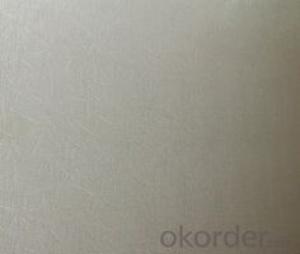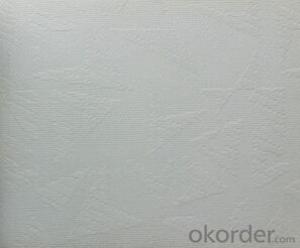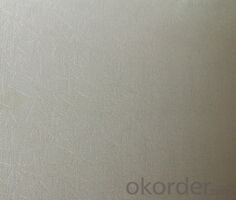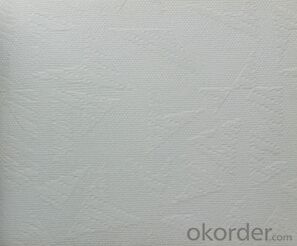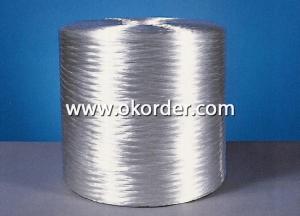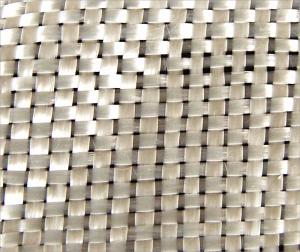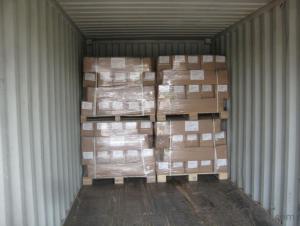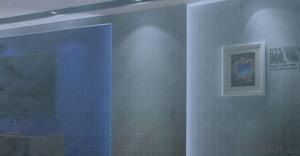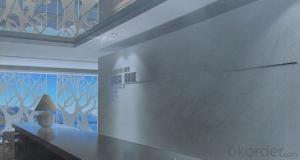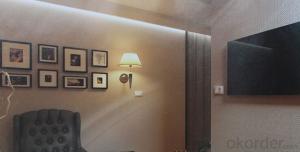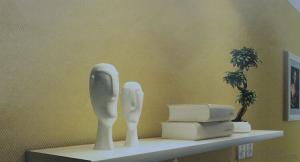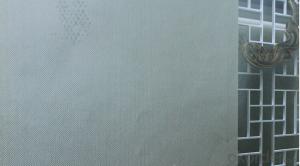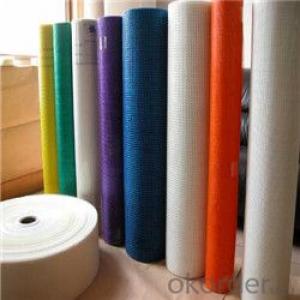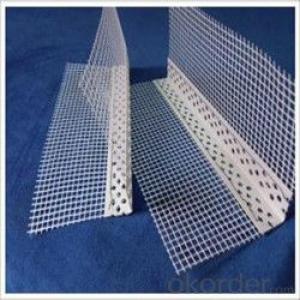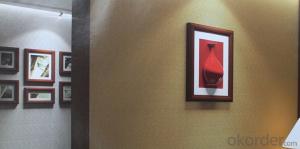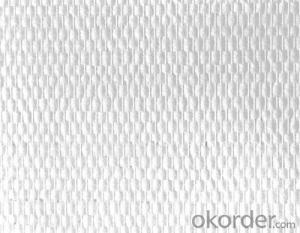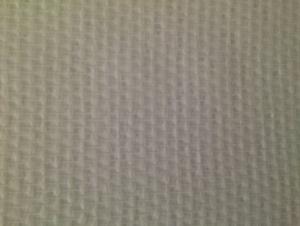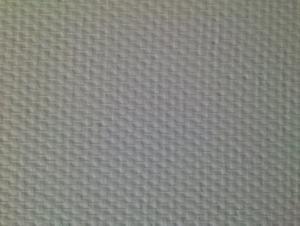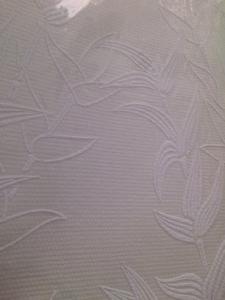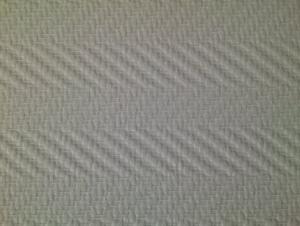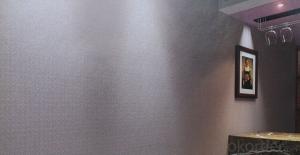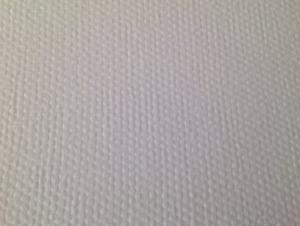Fiberglass Wallcovering Cloth for Home Decoration
- Loading Port:
- Shanghai
- Payment Terms:
- TT OR LC
- Min Order Qty:
- 100 m²
- Supply Capability:
- 100000 m²/month
OKorder Service Pledge
OKorder Financial Service
You Might Also Like
Fiberglass Wallcovering Cloth for Home Decoration
Specification of Wallcovering Cloth
.Environment-friendly
.Flame retardent
.Air permeability
.Waterproof
.Anti-corrosion
.Imcomparable strength
.Abundant patterns and colors
.Long life time
Packing Details
.Width:1m
.Length:25/50m
.Each roll of wallcovering cloth is wrapped in a shrinking polythene film,then put in carton
Introduction of wallcovering Cloth
Fiberglass wallcovering cloth,that combines the versatility of paint,from latex to epoxy,with the
strength and benefits of woven fiberglass textile yarns to meet the most demanding wall finish
requirments.Fiberglass textile yarns,as a kind of natural materials,are woven into various textures
and patterns and then treated with a natural starch binder for dimensional stability during the hanging
process.
Compared with traditional wall papers,fiberglass wall covering cloth has the following advantages:
Environment friendly,Flame Retardant,Air Permeability,Shock Resistance,Waterproofing,Anti-corrosion,Abundant Colors&Patterns.
Product Show
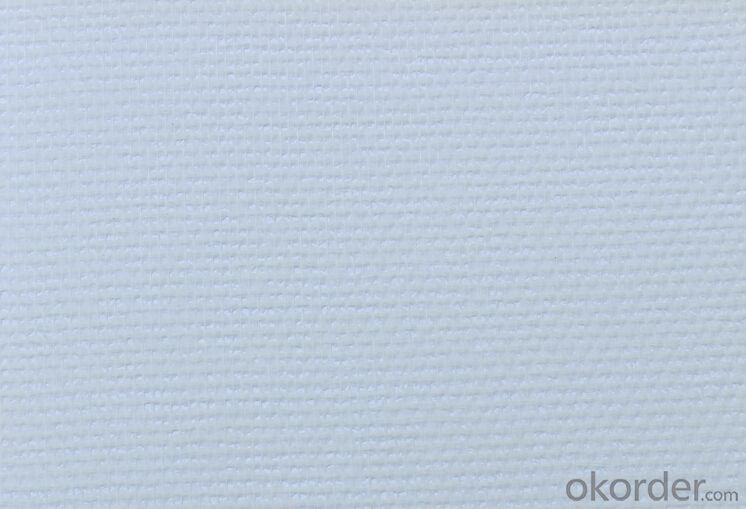
Application of Wallcovering Cloth
As a high-tech indoor decorating material,fiberglass wallcovering cloth is widely used in resident homes,
offices and shops and even cinemas,theatres,hotels and hospital faclilties,air ports,office buildings,shopping centers and schools.
Test Report
Our product has passed test by SGS as follows:
EN 12956:for determination of dimensions,straightness,spongeability and washability.
EN 12149:for determination of magration of heavy metals and certain other elements,of
vinyl monomer and of formaldehyde release.
EN 20105-B02:light solidity.
Our products had passed test of Fire Retardancy M1 Class by LINE.
- Q: Is fiberglass wallcovering cloth resistant to fading?
- Yes, fiberglass wallcovering cloth is resistant to fading. Fiberglass is known for its exceptional durability and resistance to various environmental factors, including fading. Its inherent properties make it resistant to UV rays, which are the main cause of fading in many materials. Therefore, fiberglass wallcovering cloth is an excellent choice for spaces that receive a lot of natural light or are exposed to direct sunlight, as it will maintain its color and appearance for a longer period of time compared to other materials.
- Q: Can fiberglass wallcovering cloth be used in exterior cladding systems?
- Yes, fiberglass wallcovering cloth can be used in exterior cladding systems. Fiberglass is a durable and versatile material that is commonly used in construction for its strength and resistance to weathering. When used as a wallcovering cloth, it can provide additional reinforcement and protection to the exterior cladding system. It is lightweight, easy to install, and can be applied over various surfaces such as wood, concrete, or metal. Fiberglass wallcovering cloth can help enhance the durability and longevity of the cladding system by preventing cracks, improving resistance to impact and moisture, and providing a smooth and even surface for the application of paint or other finishes. However, it is important to ensure that the specific fiberglass wallcovering cloth chosen is suitable for exterior use and is compatible with the cladding system being used. Consulting with a professional or manufacturer can help determine the best type and application method for the specific project requirements.
- Q: Can fiberglass wallcovering cloth be used in residential settings?
- Residential settings can indeed make use of fiberglass wallcovering cloth. This versatile and sturdy material offers numerous advantages for residential applications. It is commonly employed to reinforce walls, provide insulation, and enhance the overall aesthetics of a room. The durability of fiberglass wallcovering cloth is one of its main advantages in residential settings. It can withstand wear and tear, making it perfect for high-traffic areas like hallways, living rooms, and children's rooms. It can endure frequent cleaning and is less prone to damage compared to other wallcovering materials. Moreover, fiberglass wallcovering cloth is fire-resistant, which is crucial for residential safety. In case of an emergency, it can help slow down the spread of fire and provide additional protection to homeowners. Insulation is another benefit provided by fiberglass wallcovering cloth. By preventing heat loss or gain, it can regulate the temperature in a room, resulting in improved energy efficiency. This can lead to cost savings on heating and cooling bills. Additionally, fiberglass wallcovering cloth comes in a wide range of designs, textures, and patterns, allowing homeowners to select a style that suits their preferences and complements their existing decor. It can add an element of elegance and sophistication to any residential space. However, it is essential to note that proper installation is crucial for optimal performance of fiberglass wallcovering cloth. Hiring a professional installer with experience working with this material is recommended to ensure a proper and seamless installation. In conclusion, fiberglass wallcovering cloth is an excellent choice for residential settings. Its durability, fire-resistant properties, insulation capabilities, and aesthetic options make it a great option for homeowners looking to enhance the appearance and functionality of their living spaces.
- Q: Is fiberglass wallcovering cloth suitable for use in swimming pools or other water-related environments?
- No, fiberglass wallcovering cloth is not suitable for use in swimming pools or other water-related environments. While fiberglass is known for its durability and resistance to chemicals, it is not designed to withstand prolonged exposure to water. Fiberglass wallcovering cloth is more commonly used in dry areas such as commercial buildings, offices, or homes where there is minimal moisture or humidity. In water-related environments, it is recommended to use specialized materials such as tiles, epoxy coatings, or waterproof paints that are specifically designed to withstand the constant exposure to water and the associated humidity and moisture. These materials are specifically formulated to provide a waterproof barrier and prevent any damage or deterioration caused by water.
- Q: What is the glass fiber wall cloth and non-woven cloth
- Non-woven wallIt is a kind of wall material which is made of natural fibers such as cotton and hemp or polyester and acrylic fiber, and is made of non-woven resin and printed color patterns. Is flexible, not easily broken aging, surface finish and plush, not easy to fade, wear resistance, light, moisture, has a certain permeability, scrub.
- Q: How does fiberglass wallcovering cloth compare to other wallcovering materials?
- Fiberglass wallcovering cloth offers several advantages over other wallcovering materials. Firstly, it is extremely durable and long-lasting, making it a cost-effective choice for homeowners or businesses. Unlike traditional wallpaper or paint, fiberglass cloth is resistant to cracking, peeling, or fading over time. This means that it can withstand high-traffic areas and is less likely to require frequent replacement or touch-ups. Additionally, fiberglass wallcovering cloth provides excellent protection for walls. Its woven texture acts as a reinforcement layer, preventing cracks or damages caused by impacts or moisture. This makes it especially suitable for areas prone to humidity, such as bathrooms or kitchens, where other materials may struggle to withstand the moisture or steam. Another advantage of fiberglass wallcovering cloth is its ease of installation and maintenance. It can be easily applied using standard wallpaper paste and does not require any special tools or techniques. Moreover, it can be painted over, allowing for customization and easy color changes without the need for removal or replacement. Furthermore, fiberglass cloth offers a unique aesthetic appeal. It has a textured surface that adds depth and visual interest to walls, creating a more luxurious and upscale look. It can also be found in a variety of patterns and designs, allowing for endless possibilities in terms of style and décor. In conclusion, fiberglass wallcovering cloth stands out amongst other wallcovering materials due to its exceptional durability, protection, ease of installation, and aesthetic appeal. Its ability to withstand high-traffic areas, resist moisture, and provide an attractive textured finish make it a highly desirable choice for both residential and commercial applications.
- Q: Can fiberglass wallcovering cloth be used in industrial settings?
- Indeed, in industrial settings, one can utilize fiberglass wallcovering cloth. Renowned for its durability, strength, and exceptional resistance to chemicals, heat, and fire, fiberglass wallcovering cloth proves to be a fitting choice for industrial environments that encompass heavy machinery, elevated temperatures, and potential exposure to hazardous substances. Moreover, its effortless cleaning and maintenance further enhance its practicality for industrial settings that necessitate consistent upkeep and hygiene.
- Q: Fiberglass cloth and Haijibu quartz wall what are the difference between
- There is no essential difference. Pang Ming fiberglass, also known as the "sea cloth" and "Haijibu", is a natural quartz material and refined, according to all kinds of knitting process has rich texture, with a unique European low relief art style, is actually a quartz fiberglass woven cloth.
- Q: How does fiberglass wallcovering cloth compare to vinyl wallcovering?
- Fiberglass wallcovering cloth and vinyl wallcovering are both popular choices for wall coverings, but they have some key differences in terms of durability, appearance, and installation. In terms of durability, fiberglass wallcovering cloth generally outperforms vinyl wallcovering. Fiberglass is known for its strength and resistance to tearing, making it a great option for high-traffic areas or locations prone to impacts. Vinyl, on the other hand, can be more prone to scratches and tears, especially in areas where there is heavy use or potential for sharp objects to come into contact with the walls. Appearance is another factor to consider. Fiberglass wallcovering cloth typically has a more textured and natural look compared to vinyl. It can mimic the appearance of fabrics, such as linen or burlap, and can add depth and visual interest to a room. Vinyl, on the other hand, usually has a smoother and more uniform appearance, often with a glossy finish. It can provide a sleek and modern look, but it may not have the same level of visual texture as fiberglass. Installation also differs between the two options. Fiberglass wallcovering cloth is typically installed by applying adhesive directly to the wall and then pressing the cloth onto it. This method can be a bit more time-consuming and requires precision to ensure a smooth and even application. Vinyl wallcovering, on the other hand, is often pre-pasted or peel-and-stick, making it easier and quicker to install. Vinyl can be a good option for DIY projects or for those who prefer a simpler installation process. In summary, fiberglass wallcovering cloth offers superior durability and a textured, natural appearance, but installation can be more involved. Vinyl wallcovering, on the other hand, is easier to install and provides a smooth, uniform look, but may not be as durable in high-traffic areas. Ultimately, the choice between the two will depend on your specific needs, preferences, and the desired aesthetic for your space.
- Q: Can fiberglass wallcovering cloth be used in exterior architectural elements?
- Yes, fiberglass wallcovering cloth can be used in exterior architectural elements. It is a durable and weather-resistant material that can provide added strength and protection to exterior surfaces such as walls, facades, and ceilings.
Send your message to us
Fiberglass Wallcovering Cloth for Home Decoration
- Loading Port:
- Shanghai
- Payment Terms:
- TT OR LC
- Min Order Qty:
- 100 m²
- Supply Capability:
- 100000 m²/month
OKorder Service Pledge
OKorder Financial Service
Similar products
Hot products
Hot Searches
